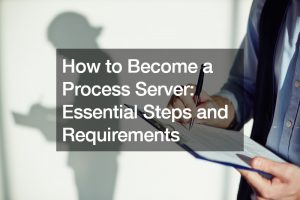Just by looking at your company’s income statement, you’ll be able to see a huge chunk of money going towards your business’ operating expenses. Did you ever wonder why they have a separate section devoted to them?
What are operating expenses?
Not all income statements declare operating expenses as is. Some declare them as Selling, General, and Administrative (SG&A) expenses. They’re costs that are accumulated and paid for by your business.
They’re different from the costs of producing your products and services. Rather, they’re what you need to dedicate funds to keep the business running normally. It’s impossible for a business not to spend on operational expenses, because that would mean the business isn’t operating at all.
SG&A or operational expenses can guide the direction of a business’s profitability. We’re sure you’d like to understand how so here you go.
In any type of business, the net income is the last stage of revenue computation. Along the lines, the operation expenses come into the picture as a subtrahend. The computation goes this way:
Revenues — Cost of Goods Sold (COGS) = Gross Profit
Gross Profit — Operating Expenses = Operating Income
Operating Income +/- Non-Operating Income/Expenses = Net Income (NI)
To make you understand the formula we provided, here is the definition of the terms we used:
Revenue
It is the total amount of income a business generates through the sale of the goods and services that are related to its operational nature.
COGS
The cost of goods sold is the upfront amount the business paid to produce the goods they sold. COGS consists of the costs of the materials and labor required for the output — or the products in question.
Gross Profit
We’ve stated in the formula that gross profit is the difference between revenue and COGS. It’s what comes out after a business computes the COGS against what they sold their main products for.
Operating Income
It is the amount of profit that comes out of an operating business, after the deduction of operating expenses such as wages, COGS, depreciation, space rental, and many others.
Non-Operating Income
It’s the part of a business’ income that comes from business activities that aren’t related to the primary business operations. The income can come from dividends, profits, foreign exchange gains, or asset write-downs.
Non-Operating Expenses
These are business expenses that aren’t related to a business’ primary scope of operations. The most common types are losses on asset disposition and interest charges.
In analyzing business performance through accounting, both non-operating income and expenses are removed to come out with numbers more relevant to core operations.
Net Income
NI or net income is the net earnings after everything — expenses and income — are calculated. The NI figures are useful to investors and business owners alike because the figures are used to assess if the business’ revenue exceeds its expenses. It is treated as a way to indicate business profitability.

What’s usually under operating expenses?
Now that you know enough about how you can compute how much your business makes while considering operational expenses, it’s time to know about what the specifics are when it comes to a business spending being considered a part of its operating expenses.
The essence of it is to cover the costs of keeping a business operating. That includes:
1. Accounting Fees
These are the fees you pay an accountant for their bookkeeping services, business tax assistance, and other accountant duties your business needs.
2. Advertising and Marketing
This one should be obvious. You need to take your business out there to gain customers and come out with sales.
3. Insurance
Opening a business exposes you to certain risks. A hire, a sale, and a purchase also put the whole venture at risk. You’ll need these insurance policies to protect yourself and your business.
4. Vehicle expenses
If your business requires vehicles to operate normally, you’d need to acquire units and manage them through a vehicle fleet management application to monitor expenditure.
5. License fees
To operate a business without going against the law, you’d need to apply and acquire licenses relevant to the nature of your business.
6. Rent
If you operate in a physical office or are leasing a storage space, rent is a cost you consider under operating expenses.
7. Salaries
You’d have a team of people working with you, and their tasks differ, along with what you pay them.
8. Utilities
Running a business requires you to use electricity, water, internet, and many other necessary utilities. You’d also account for them as costs you pay to operate smoothly.
9. Office Supplies
What falls under this are the units of computers you use for operations, papers, pens, and the typical office items you’ll find.
10. Maintenance and repairs
It’s unavoidable to run into a computer that needs repair at work. You need to account for what you pay for maintenance and repair services for your equipment.









